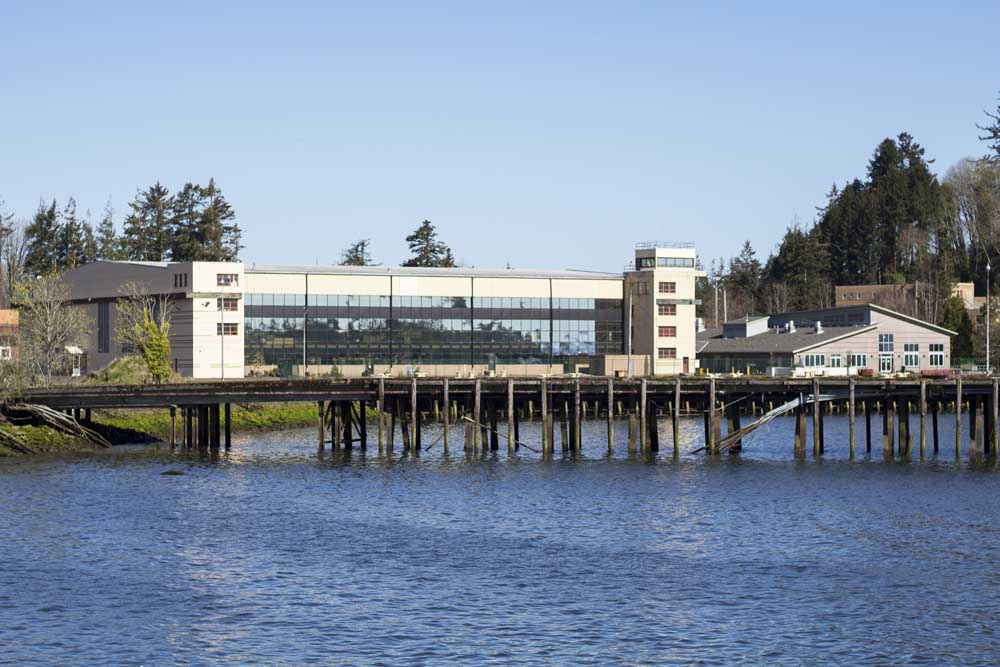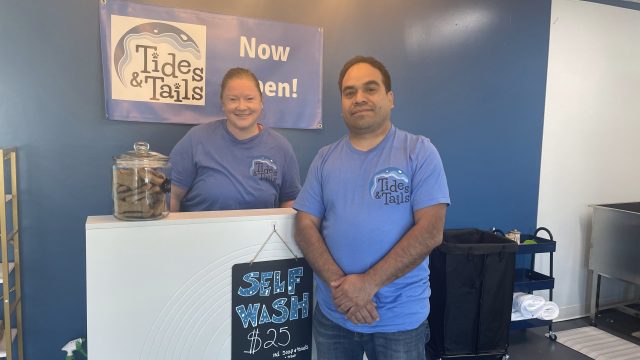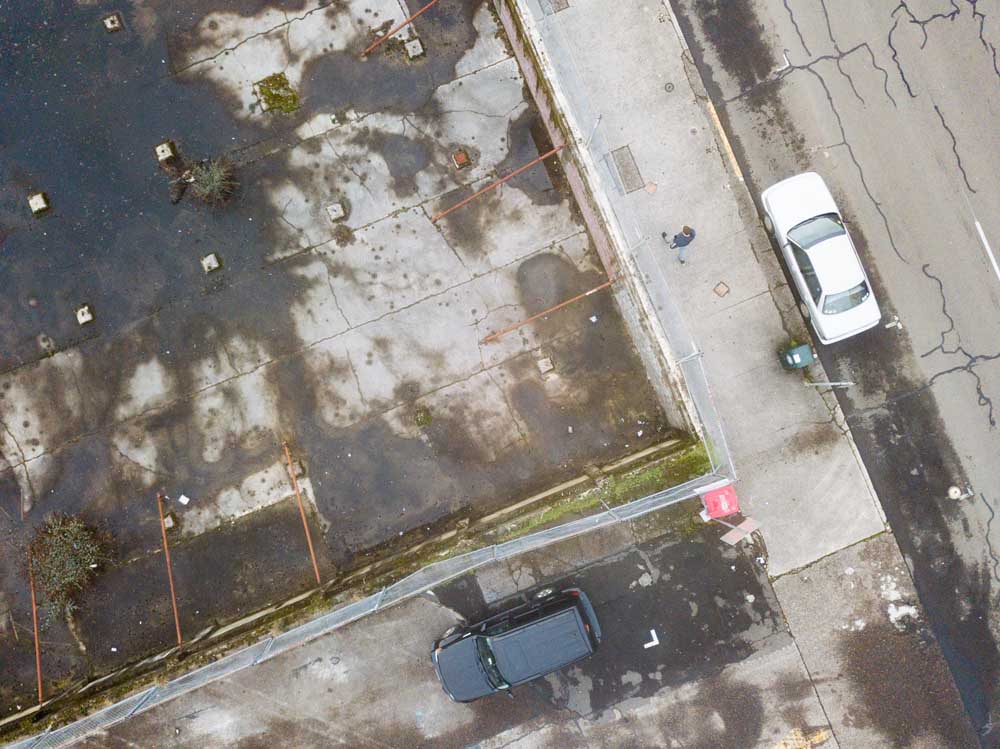OPRD Tsunami Debris Frequently Asked Questions
Published 5:00 pm Thursday, June 28, 2012
Live at the coast? Just visiting? You can help keep the beach clean by removing human-made debris that washes up. Everyone is talking about debris from the tsunami that struck Japan in 2011, and we will see some of those objects here, but the truth is debris lands on our shores all year long. No matter where it came from, you have a chance to protect Oregons beaches.
Why could we see more debris on Oregons beaches?
In March 2011, a tsunami struck the east coast of Japan and washed a large amount of debris into the Pacific Ocean. While it was easy to track with aircraft and satellites for the first few days, much of the debris70% of itsoon sank. Some of the remaining debris sank later. Most of the material that is still floating will never reach land, but some of it will travel on ocean currents or be blown across the ocean surface and end up on west coast beaches.
Where is the debris now?
It is challenging to tell, exactly. Tracking is now very difficult because the debris is spread out over an area several times the size of the United States. The National Oceanic and Atmospheric Administration (NOAA) is coordinating the effort to use satellites, aircraft and ocean-going vessels to locate debris.
When could some of it reach Oregon?
Some of it is here now. Some objects like things made of foam — sit with most of their bulk above the water. Just like a sailboat, ocean winds can move that debris quickly. While most of it will never reach the shore, and instead get trapped in a large, circular ocean current between the US mainland and Hawaii, every storm has the potential to bring more of it onshore in 2012-2013 and beyond. This has always been true, so not all the debris is from the tsunami. Check out this website for the most updated model prediction: http://marinedebris.noaa.gov/tsunamidebris/debris_model.html
How will the beach look different as we get debris?
You might not notice anything different, depending on when it arrives, and how much washes ashore at once. Debris normally comes ashore all year, every year, so identifying tsunami debris apart from normal human-made debris wont be easy. The two annual beach cleanupsvolunteers coordinated by SOLVE, the Oregon Parks and Recreation Department, and other partnersregularly remove tons of human-made debris. Thousands of Oregonians have made it their family tradition to help keep our beaches clean.
Is tsunami debris radioactive?
There is consensus among scientists that it is highly unlikely the debris from Japan is radioactive. The International Atomic Energy Agency began radiation monitoring after the tsunami and as of May 2012, no radioactive tsunami debris has been detected. NOAA is coordinating regular monitoring that will continue through 2013.??Local authorities have field-tested hundreds of items that have washed up on the coast and found no radioactive contamination. In some cases, a few items were sent to public health laboratories for more specific testing and again, no radioactive contamination was found. ??Oregon Health Authority (OHA) Public Health Division (PHD) is also regularly monitoring air and water for any higher than normal levels of radiation. To see the data, please visit the OHA PHD Radiation Protection Services “http://public.health.oregon.gov/HealthyEnvironments/RadiationProtection/RadiationMonitoring/Pages/index.aspx” webpage.
What about toxins or hazardous liquids? Could the debris contain that?
Yes, and has been the case for years. We already see barrels, bottles and other containers holding oil and other chemicals a couple times a year. For the proper way to report hazardous beach debris, please see Question 9 below.
Is there a chance that human remains could be in tsunami debris that washes ashore?
On very rare occasions, human remains are discovered on the beach following known and unknown incidents, such as accidents and drownings. It is highly unlikely that any human remains associated with the Japan tsunami will be located in any debris. There are already processes in place to deal with human remains found on the beaches. Call 911 or any Oregon State Police dispatch command center.
So if its not radioactive, and no more or less hazardous than what we already see on the beach, how will tsunami debris be different?
We might see unusual items, and more beach debris. Unusual items could be docks, vessels, and large floats. They pose a hazard to navigation, especially to small vessels. We may see an increase in wood, plastic, rigid foam, lost fishing gear, and anything else that floats. It is possible that items with cultural or personal importance will survive the cross-ocean trip, and we need to handle this property with respect in cooperation with Japanese authorities. If you find a object that you think might be worth more than $100 or could be personal property, please turn it in to the nearest Oregon State Park office or local law enforcement, or keep it safe and call 211 to report it by phone, or send an immediate email with the date, location where found and a photo to HYPERLINK “mailto:beach.debris@state.or.us” beach.debris@state.or.us.
So what do I do if I see debris on the beach?
Depends on what and where it is. Litter and other typical marine debris.? Examples: Plastic bottles, aluminum cans, buoys, Styrofoam.
If practical, we encourage you to remove the debris and recycle as much of it as possible. If you cant remove the debris from the beach yourself, please move it far enough away from the water so it doesnt wash back out at high tide. Use your judgment. And if you see a significant amount of debris or anything you think might be related to the tsunami, send an email with the date, location and photos to HYPERLINK “mailto:beach.debris@state.or.us” beach.debris@state.or.us or call 211.
Exception for the south coast?Some areas of dry sand on the south coast are closed to protect nests for the threatened western snow plover. Do not enter these marked closure areas. If marine debris becomes a problem there, government agencies will organize cleanups when it will be least harmful to the birds. Snowy plovers are protected under the federal Endangered Species Act.
Derelict vessel or other large debris item.?Examples: Adrift fishing boat, shipping containers. Call 911 in an emergency. If the debris is a hazard to navigation, call 211 and you will be connected with the US Coast Guard. Do not attempt to move or remove vessels.
Mementos or possessions.? Examples: Items with unique identifiers, names, or markings. If an item can 1) be traced back to an individual or group and 2) has personal or monetary value, call 211 to report it or send an email at beach.debris@state.or.us so we can make appropriate arrangements for return of items to Japan.?
Potential hazardous materials.? Examples: Oil or chemical drums, gas cans, propane tanks. Call 211 and you will be connected to the US Coast Guards National Response Center. Report as much information as possible. Do not touch the item or attempt to move it.
So whats Oregon doing to prepare for unusual amounts of debris?
A partnership of agencies and nonprofits are working with coordination help from Oregon Emergency Management and NOAAthe lead federal agencyto prepare for the increase in beach debris. By working togetherSOLVE, Department of Environmental Quality, Oregon Parks and Recreation Department, Surfrider Foundation, Sea Grant, US Coast Guard and other federal agencies, your local counties, cities and portswe will all have to pitch in to collect debris and dispose of it through recycling and landfills.
We need to take what we already know how to dolocate, report and remove human-made debrisand be ready to do it quickly and correctly. Oregon State Parks is ready to issue special permits to help authorities and nonprofits act quickly if any unusually large objects or a high volume of debris appears.
Is there something more I can do now to help?
Sure is. Human-made debris on the beach is a constant problem. Work with the Oregon Shores Conservation Coalitions Coast Watch program, join the two annual beach clean-ups, or contact a coastal nonprofit like the Oregon chapter of the Surfrider Foundation. Even without the possibility of extra debris, keeping beaches clean is a challenge Oregon can only meet with help from her citizens.
Where can I go for more information?
For Oregon-specific information:
OPRD: http://www.oregon.gov/OPRD/PARKS/tsunami_debris.shtml
?725 Summer St NE, Salem OR 97301, 1-888-953-7677.
Dept of Environmental Quality:? http://www.oregon.gov/deq/
?811SW 6th Avenue. Portland OR 97204-1390, 800-452-4011.
Health Department:?http://public.health.oregon.gov/preparedness/pages/04-2012japandebris.aspx
?500 Summer Street NE E-20, Salem, OR 97301-1097, 877-398-9238
SOLVE: Volunteer opportunities ? http://www.solv.org/?
2000 SW 1st Ave, Suite 400, Portland, OR 97201, 1-800-333-SOLV
Surfrider Foundation: Volunteer opportunities? http://oregon.surfrider.org/
CoastWatch (Ocean Shores Conservation Coalition): Volunteer opportunities? http://www.oregonshores.org/coastwatch.php5
?(503) 238-4450
Federal agencies
NOAA: http://marinedebris.noaa.gov/info/japanfaqs.html
A marine debris reporting app: http://www.marinedebris.engr.uga.edu
Boating
So what do you do if you see debris while youre boating?
Safety first! Large marine debris objects from the tsunami may be floating in the North Pacific, and pose a serious hazard to navigation, especially to small vessels. Watch out for such items, and if you see one, report immediately to the Coast Guard and provide date, time, location, and description. If it is just small trash you can safely retrieve (such as plastic, cans and so on), collect it if safe to do so and dispose of it at the boat ramp garbage container.??If its a large amount of small debris, report it to the local state park staff or law enforcement, or call 211, or send an email with the exact location, description and photo (if possible) to HYPERLINK “mailto:beach.debris@state.or.us” beach.debris@state.or.us .??Is it a big oil drum, gas can, propane tank (or other kind of chemical storage tank), boat or something similar? Call 211 and youll be connected to the U.S. Coast Guard National Response Center (1-800-424-8802). If the debris is a hazard to navigation, call 211 and youll be connected to the US Coast Guard Pacific Area Command (510-437-3701). Report the location (GPS latitude/longitude), time and a description of your boat. Do not attempt to move or remove vessels.
Effects on the ecosystem
Are there plants and animals attached to tsunami debris?
In some cases, yes. A large item such as a dock or a vessel may contain invasive species, which should be addressed quickly and effectively. However, a lot of debris that washes ashore is not from the tsunami: much of the debris that washes ashore every day has living organisms on it; many of these are species to the open ocean and do not pose a threat to the environment.
What about species that could be invasive?
Much of the debris from the tsunami does not carry invasive species. The items most likely to carry invasive species are those that were floating in Japans waters for some time before the tsunamidocks, buoys and boats, for example.
Why are invasive species a problem?
Marine invasive species pose a serious threat to Oregons marine ecology and species by competing with native fish and wildlife for food and habitat and eating them. While not all nonnative species are destructive, most often, they exist at the expense of native fish and wildlife and the states economy.
So who is involved in managing species that come ashore on tsunami debris?
The Oregon Department of Fish and Wildlife manages debris that contains living organisms and is associated with the tsunami that hit Japan in March 2011. Staff members coordinate with state and federal agencies; non-governmental organizations; universities; and other stakeholders and professionals on invasive species issues.
What should I do if I find debris and theres something growing on it?
It depends on what you find
Remove and dispose of marine debris small enough for you to pick upwith or without living organisms on themto a garbage can or a landfill.
If this is not possible, move debris to dry sandabove the high tide line so that any organisms living on it will die and not be returned to the ocean.
Never move debris with organisms on it to other bodies of wateran aquarium, pond or estuary.
If the debris if too large to remove, contact Oregon Park and Recreation Department by email at HYPERLINK “mailto:beach.debris@state.or.us” beach.debris@state.or.us or call 211.
How do I find out more?
Visit ODFWs Marine Invasive Species page in the Conservation section of the website under Invasive Species. It will be updated regularly. HYPERLINK “http://tinyurl.com/oregonmarineinvasives” http://tinyurl.com/oregonmarineinvasives ??Staff contacts:?Rick Boatner, Aquatic Invasive Species Coordinator? HYPERLINK “mailto:Rick.J.Boatner@state.or.us” Rick.J.Boatner@state.or.us?(503) 947-6308??Meg Kenagy, Conservation Communications Coordinator? HYPERLINK “mailto:meg.b.kenagy@state.or.us” meg.b.kenagy@state.or.us?(503) 947-6021





